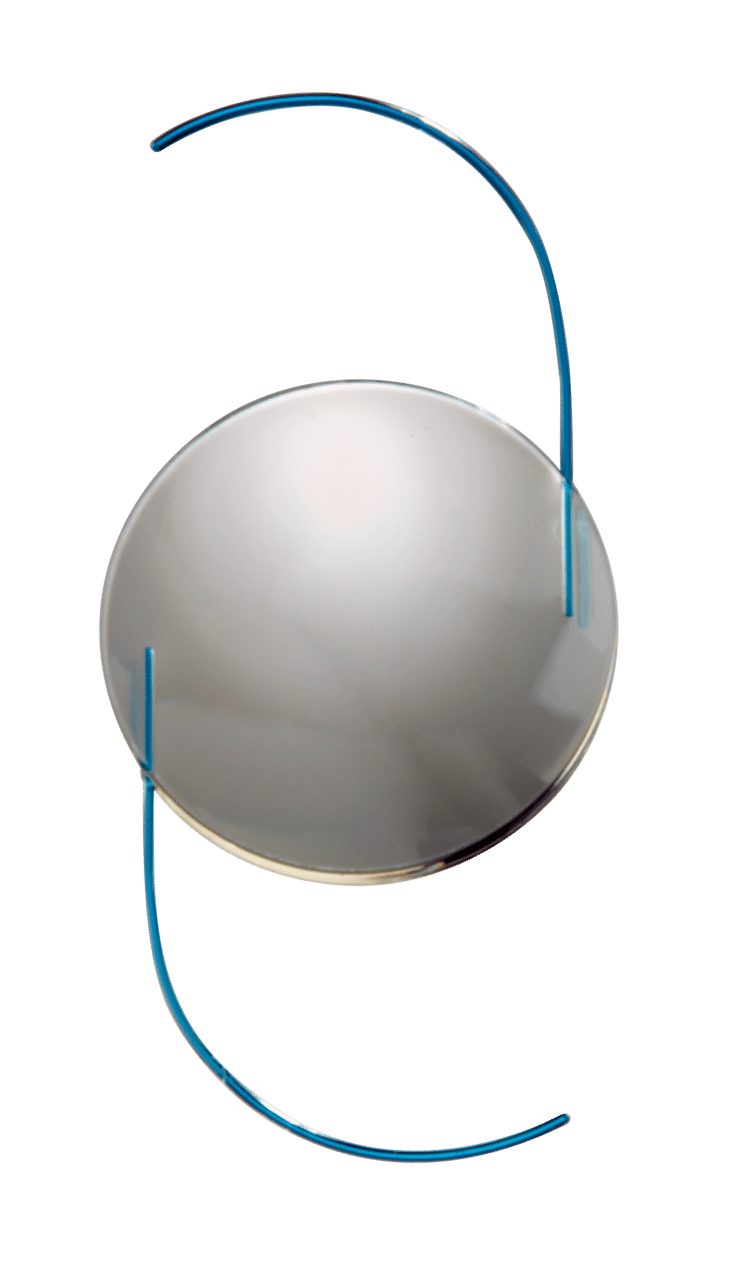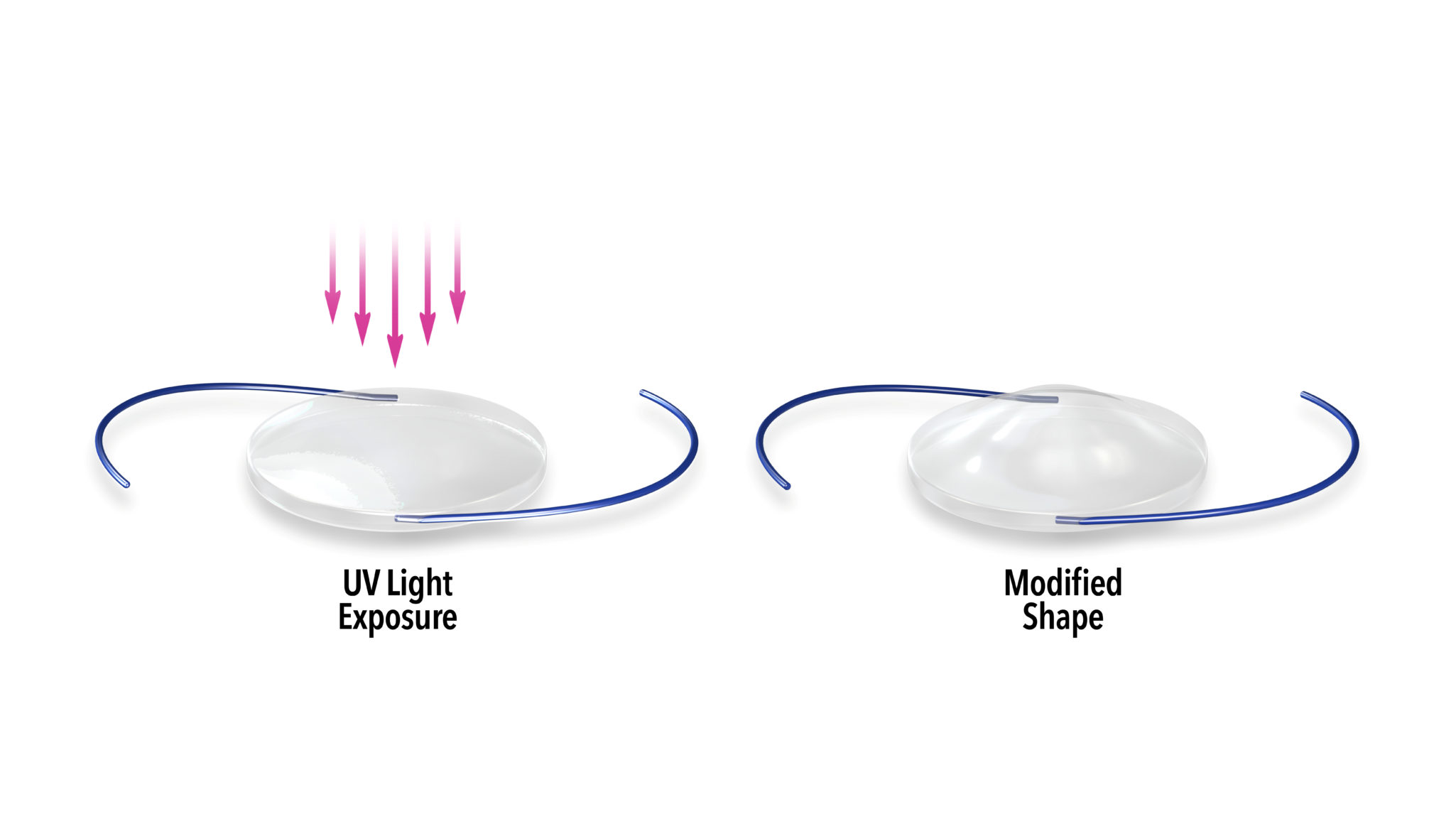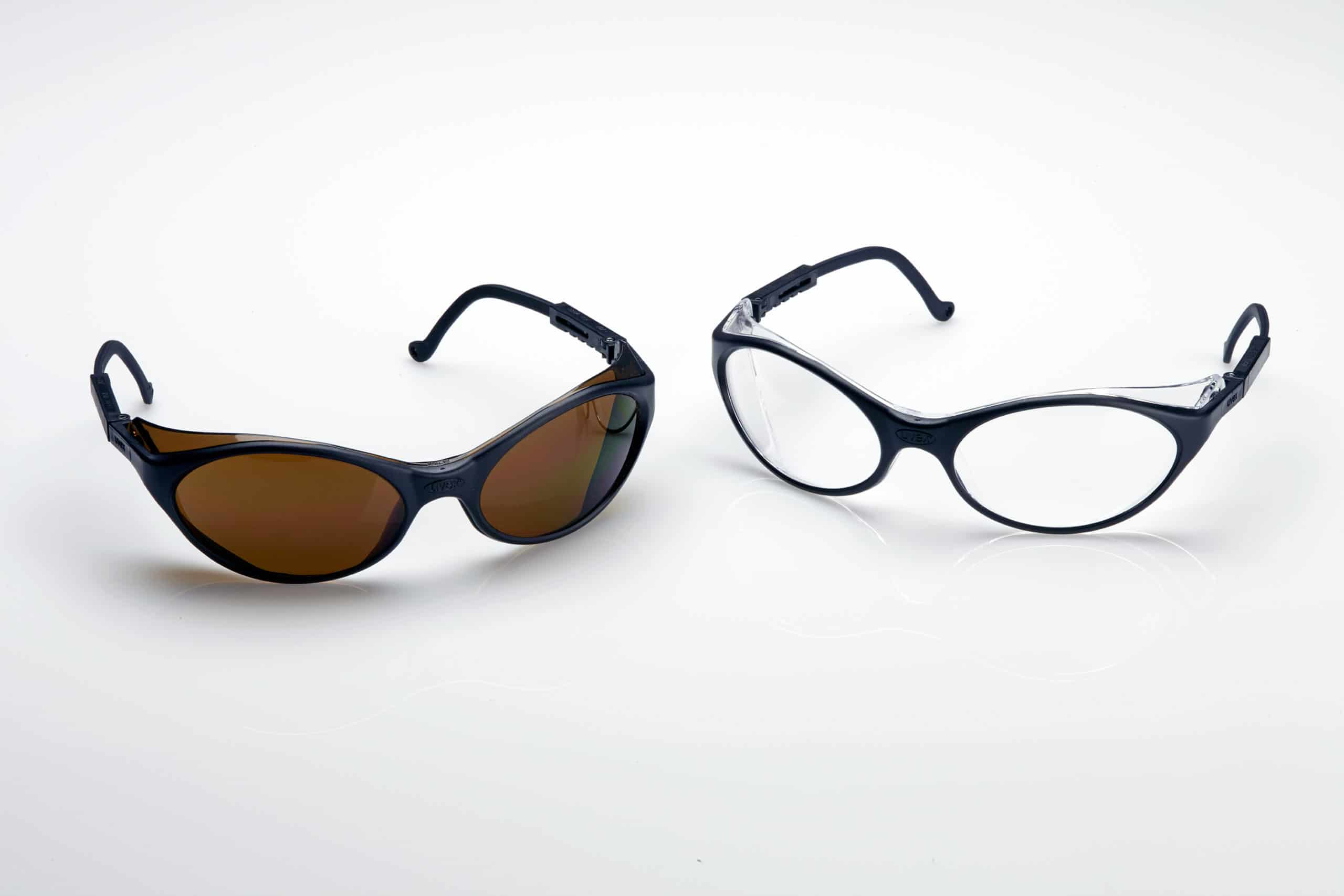What is the Light Adjustable Lens (LAL)?
The Light Adjustable Lens (LAL) is a revolutionary new intraocular lens that is refined after the lens is implanted into your eyes. The Light Adjustable Lens gives better uncorrected vision than standard monofocal or toric lens implants for most patients.

After surgery the focusing of the Light Adjustable Lens is refined with ultraviolet light treatments in the office, while the lens implant is in your eye. This precise focusing of lens power after surgery often improves the uncorrected quality of vision beyond what is typically obtained with standard intraocular lenses.
What is the process for LAL Treatment?
The focus of the RxLAL™ is refined by specific patterns of ultraviolet (UV) light produced by the Light Delivery Device (LDD), an instrument that Dr. Sondheimer applies to your intraocular lens in the office beginning 2-3 weeks after cataract surgery. Up to three light adjustment treatments can be performed to customize, refine, and improve your vision, with a separation of at least 3 days between treatments.
When you and Dr. Sondheimer are satisfied with the focusing of your vision, the same LDD is used to permanently Lock In your correction in the LAL.
From immediately after surgery until 24 hours after the completion of the second Lockin treatment, you will need to protect the LAL lens implant from UV light in the environment by wearing protective eyewear when outside during daylight hours.

What are the advantages of the Light Adjustable Lens?
The Light Adjustable Lens’ is the only lens implant that can be refined inside the eye after it has been implanted in surgery. Rather than relying on measurements made prior to surgery to give the best vision focus, the light adjustable lens is treated in the patient’s eyes to give the best clarity of vision. The vision in the 2 eyes can be blended and adjusted after surgery to give the desired distance vision, computer vision, and reading vision, for each patient. Patients who have had refractive surgery, such as Lasik or PRK, are more likely to achieve better vision without glasses
How does the Light Adjustable Lens work?
The Light Adjustable Lens’ refractive power is be changed after implantation in the eye using a clinic-based UV light source to reshape the Lens in specific areas by binding macromers together. This light stimulation causes a highly predictable change in the curvature of the lens - which focuses your vision. Your Lens can be customized to give excellent vision - often at both far and near.

Prior to implantation
It is important for you to tell you Dr. Sondheimer about any eye diseases, surgery or any other problems with your vision that you may have experienced in the past. Some medicines and supplements cannot be used prior to the Ultraviolet Light Adjustments. It is very important that you tell Dr. Sondheimer about all the medications and supplements that you are taking.
What People Say About Us!
"Dr. Sondheimer is a caring, dedicated doctor who wants the best outcome for his patient. He thoroughly answers all questions."
What should I expect after cataract surgery?
You must follow all of Dr. Sondheimer’s Post Operative Instructions, including always wearing of the UV-blocking glasses when you are outside during daylight until your final correction is locked generally 5 to 6 weeks after your second eye’s surgery, Dr. Sondheimer will help you choose how you would like to refine your vision. Many patients choose to refine their vision to see well for both distance, computer, and reading without the need for glasses. Other patients prefer to have their eyes focused in the distance and use corrective lenses for reading. With the Light Adjustable Lens, these decisions can be better made after the vision is improved following cataract surgery. Vision can be precisely refined after the blurry vision from the cataracts is removed. The Light Adjustable Lens does not typically result in glare and halos as is often a side effect of Multifocal Intraocular Lenses.
UV Protective Eyewear
Immediately after surgery, you must wear the special UV protective eyewear provided to you. The protective eyewear will protect the RxLAL™ from UV light from the sun and other UV sources outside.
UV protective eyewear will be provided to you to use outside during daylight hours. The UV protective eyewear must be worn when outside during daylight hours until 24 hours after Dr. Sondheimer locks in your final refinement in the LAL.

What can happen if you don’t wear protective eyewear
If you do not wear the required protective eyewear, your vision could be made worse and the LAL might need to be removed and replaced with a new lens. This could lead to other complications from the additional surgery.
What Can Happen If You Don’t Wear Protective Eyewear?
If you do not wear the required protective eyewear, your vision could be made worse, and the LAL might need to be removed and replaced with a new lens. This could lead to other complications from the additional surgery.
Who Is a Candidate for LAL Treatment?
Ideal candidates for the LAL treatment are patients who have cataract surgery or have had a previous vision correction procedure such as PRK or Lasik. This treatment can also help patients reduce or eliminate the need for glasses.
What Are Contraindications for LAL Treatment?
Light Adjustable Lens is contraindicated in patients who take medications that may increase their sensitivity to UV light or medication considered toxic to the eye's retina. Patients who take these medications may be at increased risk of complications during the procedure and recovery if they undergo LAL treatment. Patients with a history of ocular herpes simplex virus due to exposure to UV light may also not be suitable for this treatment.
How Many Total Light Treatments Will I Need?
You will need to have 3 to 5 ultraviolet light treatments to refine and lock in your vision. When you and Dr. Sondheimer determine that the best possible result has been obtained, then the final vision correction is locked in. Sometimes no further improvement is possible with more light treatments.
Are Light Treatments Painful?
Numbing drops will always be applied to the eye to ensure patient comfort. Bright lights may be noticed during the Adjustment Treatments.
How Long Does the Light Treatment Take?
Each light treatment will last less than 120 seconds. A careful refraction will be performed to determine the refractive state of your eyes. Dr. Sondheimer will help you select your choices of where to blend your vision to give excellent vision without glasses for distance, intermediate, and/or near vision, as best customized for you. Regular astigmatism, nearsightedness, farsightedness, and often the need for reading glasses can be treated with the Light Adjustable Lens. Your eyes will be dilated for each treatment.

What should patients expect after each light treatment?
Vision will be blurry immediately after each treatment and for the following 24 hours. As the lens reshapes you should notice your vision improving as the LAL reshapes to refine your vision. Your eyes will be dilated for several hours for each treatment. It should take about 24 hours after each light treatment for your vision to improve.
What Should I Do After LAL Treatment?
Following Dr. Sondheimer’s aftercare guidelines is an essential step in achieving a complication-free, successful recovery. These aftercare guidelines may include:
- Always wear your UV-blocking glasses outdoors during daylight hours.
- Take your post operative eye drops as directed by Dr. Sondheimer.
- Avoid tanning studios and other cosmetic UV-light treatments until you are fully recovered.
- Avoid wearing makeup until a week after your eye surgery.
Schedule a Client Consultation in Skokie, IL
To learn more about LAL treatments or to schedule a consultation at one of our North Suburban Chicago offices, please call 847.677.2794.

